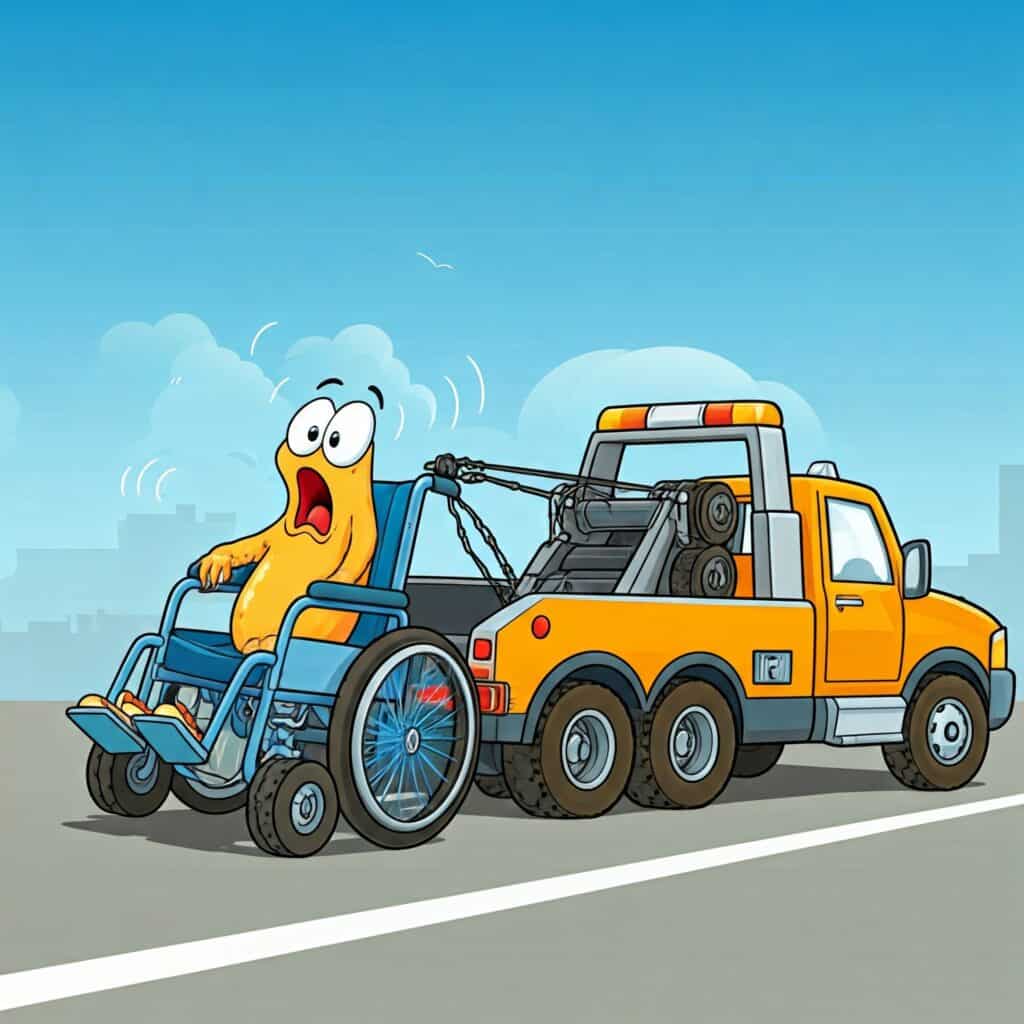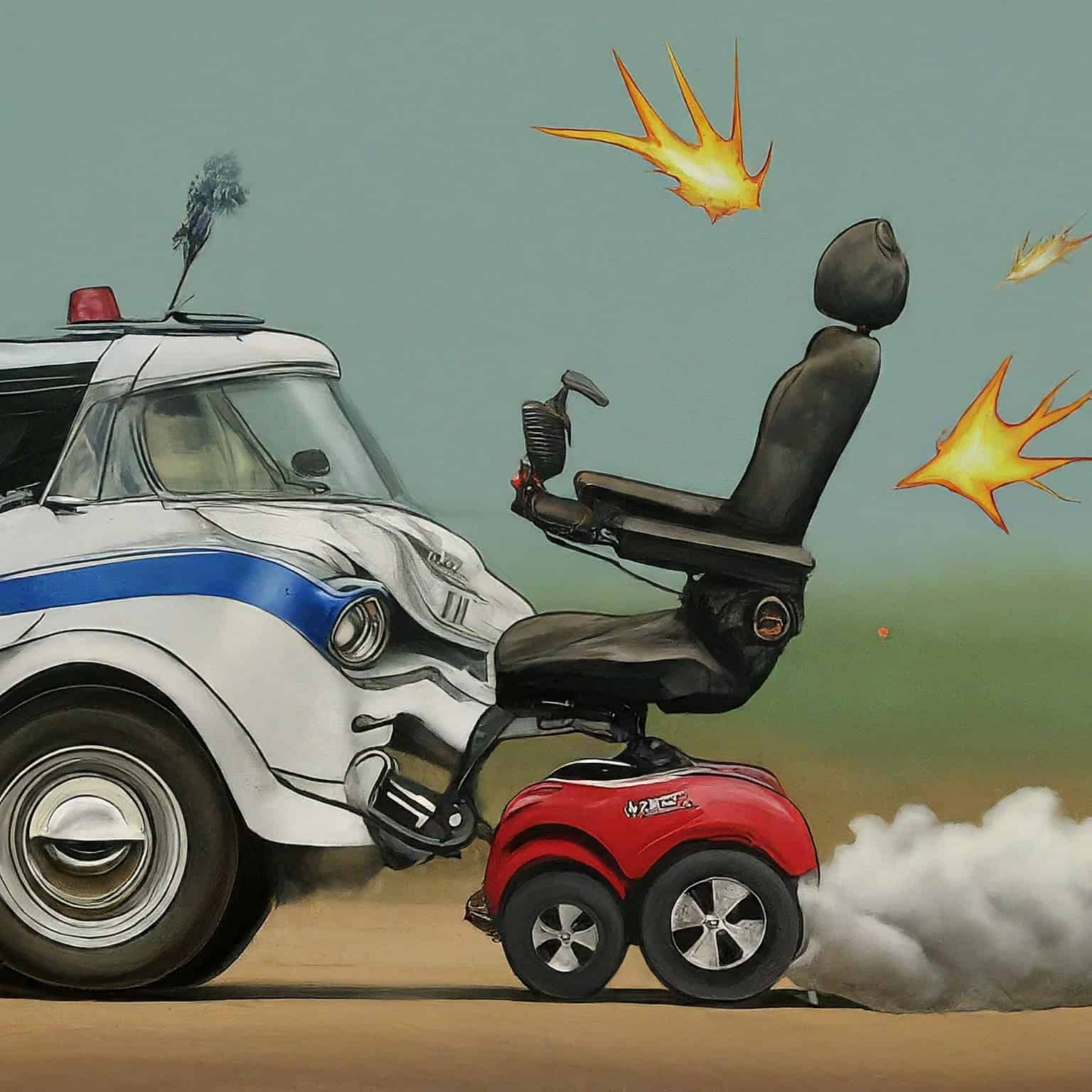Everyday in our communities, we see many individuals in manual wheelchairs, electric wheelchairs and even others using mobility scooters. Seeing people using such mobility devices has occasionally led me to ponder the question of whether or not there are any circumstances when such modes of transportation – such as a wheelchair – would be legally considered a vehicle? When you brake the question down it can get pretty interesting.
Is a wheelchair considered a vehicle
So, is a wheelchair considered a vehicle? This might seem like a simple enough question at first glance but, unfortunately, there is no definitive nationwide answer to the question of whether or not a wheelchair can be legally considered a vehicle. Instead, states have their own rules about this, and while some explicitly state that any kind of mobility device is not a vehicle, some states classify certain types of wheelchairs as vehicles.

By the standards of the law and by the policies of various insurance providers, things can get quite tricky. If wheelchairs are in fact considered to be vehicles, then this could present a significant problem for the elderly and disabled communities who rely on wheelchairs, because it could create circumstances in which the cost of mobility insurance could potentially be raised up significantly. For those on Social security or disability payments, this extra cost could result in people losing their independence and their mobility.
Defining what a vehicle is, and what a wheelchair… isn’t?
There is very little debate about the status of non-motorized wheelchairs. Transport that is operated with muscular power, such as bicycles, are in their own class of transport. The wheelchairs that have been subject to Court arguments for them to be considered as vehicles are motorized wheelchairs and mobility scooters.
In some US States, the Law explicitly excludes “electric personal assistive mobility devices” from being defined as motor vehicles. There have also been cases previously in which courts have legally recognized mobility scooter users as pedestrians. This is not the case in all states though, and in places like Michigan, insurance law is broader, defining a motor vehicle as,
a vehicle, including a trailer, operated or designed for operation upon a public highway by power other than muscular power which has more than 2 wheels. (Michigan Legislature)
This definition applies to mobility scooters in enough ways that they could be argued to be vehicles. There is a legal grey area which has wide-reaching implications for power wheelchair users. In particular, there is the potential for this to impact both the cost of insurance for such wheelchair users and their legal protection in cases of road accidents.
Who are these power wheelchair users?
Wheelchairs and other mobility devices have grown hugely in popularity recently, as they have become more widely available. 1.7 million American residents use wheelchairs or scooters. Wheelchair users often face discrimination and lack of access in their communities, with four-fifths of wheelchair users reporting that their local public transportation systems are difficult to use. Mobility device users are most likely to be elderly, but there is also a substantial group of working-age mobility device users. Unfortunately, however, less than one-fifth of working-age wheelchair users are employed. Because of this high unemployment rate, wheelchair users are significantly more likely than the general population to live in poverty.
n 2017, nearly 6,000 people were hit and killed by vehicles, and although there is no specific data on how many of those people were wheelchair users, we do know that wheelchair users make up a disproportionate number of those struck. There are many reasons for this, such as paths and roads being more difficult to navigate for wheelchair users, or wheelchair users being below a driver’s eye-line.

So, who might want power wheelchairs defined as vehicles?
When asking the question, is a wheelchair considered a vehicle?, it gets interesting to see who might want to say ‘yes’ – and why. Insurance companies would stand to benefit enormously if power wheelchairs and mobility scooters were defined as vehicles because there would then be a potential opportunity to increase their profits. They might then also have the right to deny insurance coverage under their policies. The other implication is that insurance companies might then be able to charge powered wheelchair users higher fees to insure their mobility devices as a classification of motor vehicle.
In states like Michigan, where the classification has come under scrutiny, and motorized wheelchairs are considered a category of vehicles, this has significant impacts. If a wheelchair user is not insured and is hit by a car, truck, or other road users while on a public roadway, the person who has been injured may not be eligible for compensation by the insurance company representing the party of the vehicle who collided with the mobility device user. This may also force wheelchair users to take out insurance policies for their motorized wheelchairs to protect them if they were to be injured by a car while traversing on a roadway.

So, is it legal to take a motorized wheelchair onto the road?

There is such a thing as road-legal mobility scooters, but that doesn’t mean they are just allowed on the road. In most states, mobility device users are considered pedestrians, whether they are using a wheelchair, motorized wheelchair, or mobility scooter. This means that no matter how fast someone may be able to go, they will still have to abide by the same pedestrian rules as everyone else. This means that legally, a wheelchair user would only be on the road to use crosswalks and zebra crossings, just like everyone else.
The problem is that for many cities, there are neighborhoods where the infrastructure is dated and not designed with wheelchair users in mind. This means that many wheelchair users have to turn to other options just to get around.
When would a wheelchair be on the road?
In most states, wheelchairs of any kind, and mobility scooters, are considered pedestrians and are freely allowed to travel on footpaths. Footpaths, however, are not ideal for wheelchair users. However, even on paved sidewalks, the constant sloping of driveways can be difficult to traverse, particularly for those who operate their wheelchairs with a “chin drive”, a joystick mounted near their chin. Wheelchair users may then use bicycle lanes as an alternative. This is not strictly legal in most states, but it is often necessary, particularly in situations where there is no footpath access for wheelchairs. In cities such as Seattle, the law explicitly states that wheelchair users are permitted in bicycle lanes at speeds of up to 35mph.
Many road accidents also occur when pedestrians are crossing the road, and wheelchair users are no exception to this rule. Wheelchair users may, under laws in places like Michigan, be deemed to be using the road and therefore ineligible for compensation if they are injured by a road vehicle while crossing the street.
Finally, what about the wheelchair manufacturers warranty?
Wheelchair accidents due to faults in the product are inevitable, and if this occurs, the user is covered under manufacturer’s warranty under product liability law. Manufacturers have a duty to create a product that is safe for its users.
So if a wheelchair is designed improperly, manufactured poorly, or does not come with adequate warnings, then the manufacturer is liable. In the case of an accident involving a wheelchair and a motor vehicle, determining if the accident was the result of a manufacturer error can be tricky. It will generally depend on statutory violations, like if the driver or the victim broke the law.
Courts will often also consider legal liability more generally, like if the driver or the victim acted negligently or recklessly. There may be no hard evidence that a fault in the product was to blame for the accident, even if that is the case, which means that victims are rarely covered by a manufacturer’s warranty.
So is a wheelchair considered a vehicle – and if not should it be? It is a basic consideration of the rights of the disabled that the tools considered essential for living their everyday lives not be inadvertantly subject to potentially harsh laws. Classifying motorized wheelchairs as vehicles has the potential to create unnecessary expenses for users, and puts them at a higher risk of being under-insured in case of an accident.
As previously mentioned, the rules vary State-by-State. In most States, wheelchair users enjoy the same legal protection as any other pedestrian, however in those States where motorized wheelchairs and mobility scooters can be legally classified as vehicles, users may not be able to claim adequate compensation if they are struck by a motor vehicle, potentially leaving them on the hook for the cost of repairs to those mobility devices which they consider essential for their mobility and independence.
